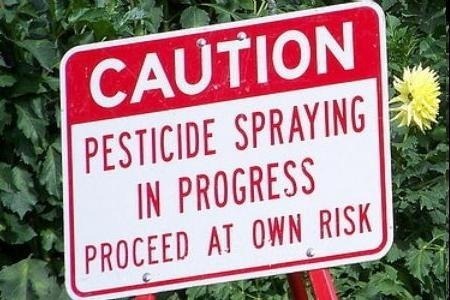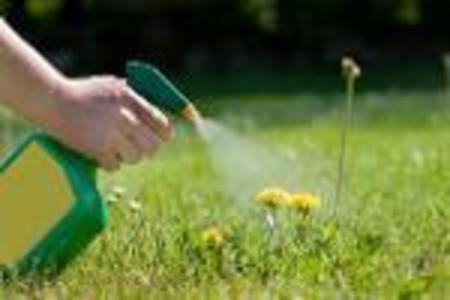The answer to that question is an unequivocal and very loud YES. For generations, the industrial chemical companies, whether they be pharmaceutical, agricultural, energy or from other sectors, have maintained that only certain ingredients in their products must be measured and accounted for – the so-called ‘active ingredients’. The adjuvants, those chemical compounds that dilute, preserve or in some way maximize the delivery of the primary chemical, are considered inert or inactive by regulatory agencies. As a result, and much to the benefit of the chemical manufacturers, those adjuvants fall outside the purview of testing and regulation. That is, not only are most of these chemicals not identified in the primary product, but they are not tested for safety – ever. Only the active ingredients are tested, singly, and never with the entire chemical cocktail that is the product itself.
As one might suspect, the inactive ingredients are far from inactive, either when tested alone or when combined with the active ingredients. In chemistry when compounds interact, it is not always a simple, linear, one to one relationship; sometimes 1+1 = 10 or more. That is the case with adjuvants. Indeed, that is their function – to maximize the strength of the active ingredients, and so, by definition and by design, failing to test adjuvant safety represents the height of scientific dishonesty.
Slowly and despite the chemical industry’s promulgations to the contrary, independent scientists are demonstrating just how active, inactive ingredients really are. In the field of agricultural chemical safety testing, one lab stands out – the Seralini Lab in France. Over the last several years, researchers from the Seralini Lab have conducted and released a series of controversial studies on agricultural chemical safety. Here are just a few that we have covered on Hormones Matter: Controversy, GMO Research and Women’s Health and Inert Ingredients in Glyphosate Herbicides are Toxic Too.
Adjuvants Matter
Just recently, the Seralini Lab published another damning set of experiments showing just how toxic the cocktail of chemicals found in common, presumed safe, pesticides, herbicides and fungicides really are. The study: Major Pesticides are More Toxic to Human Cells than their Declared Active Principles, demonstrates clearly the egregious inanity of testing only manufacturer declared active chemicals.
In the present study, researchers measured the toxicity of nine common, commercially and consumer available formulations, three from each category, pesticides, herbicides and fungicides, against three types of human cells, embryonic-kidney (HEK293), placental (JEG3), and young adult liver (HEPG2). What they found was striking. Eight of the 9 formulations tested were several hundred to several thousand times more toxic than the active chemical alone and at levels significantly less than currently allowed by regulatory standards and used commercially. The single formulation that was not more toxic than declared, contained no adjuvants.
Fungicides were found to be the most toxic chemical formulations at levels 300-600 times lower than currently accepted agricultural dilutions. Next in line was Roundup, one of the most heavily marketed and used herbicides, worldwide. Roundup toxicity ranged from twice to 10 times that of the other herbicide and pesticides and its total formulation was 125X more toxic than its declared active chemical, glyphosate.The placental cells were most sensitive to the toxins, followed by embryonic and liver cells, respectively.
Mechanisms of Toxicity
The most common mechanisms of toxicity were cell membrane disruption and the interruption of mitochondrial respiration rather than an immediate initiation of cell death or apoptosis. The authors note that apoptosis was difficult to measure because cell-death occurred via a necrotic progression rather than an immediate apoptosis reaction. This is important for a number of reasons.
The job the adjuvant is to maximize the insect, fungal or weed killing properties of the active ingredient. Seralini’s work shows us that these adjuvants work as designed, even in human cells. They maximize the killing properties of the active ingredients by weakening cell membranes (all the better to absorb the poison intracellularly and leak cell contents out into the extracellular space) and disrupting mitochondrial respiration (impaired energy and nutrient processing, make surviving the toxin that much more difficult).
Adjuvants increase toxicity by specific mechanisms that call into question, not only, their absence in testing, but the nature of toxicology testing in general. Specifically, these adjuvants evoke cell injury versus cell death. They increase the permeability of the cell wall and decrease mitochondrial respiration. These mechanisms evoke complex and chronic health conditions that are difficult quantify in standard dose-response toxicology curves with humans. Here is it is not the dose per se that increases death rate, even though higher doses would expedite the process, but the time lapse required between the exposure and the necrotic reactions in cells to reach critical mass to be clinically relevant. Imagine a slow and painful death versus the immediate and easily recognizable death.
In lower organisms like bugs, weeds and fungi, where mass is smaller, life cycles are shorter and chemistry simpler, the time frame is quicker, the injuries are more obvious and death more expedited. A standard dose response curve may appear appropriate because with the expedited time frame of the organisms life cycle e.g. the critical mass of necrotic cells can be reached more quickly to initiate death.
In contrast, however, those same deleterious mechanisms activated in higher animals and humans, would not be so easily detected, within the short time frame generally allocated for these types of studies. Initiating mitochondrial dysfunction in humans and large animals would be unrecognizable at first, and perhaps chronically, making connecting the dots between exposure to these toxic chemicals and ill health particularly difficult. When the mechanisms action of the poison evokes a process that is time dependent, larger doses appear safe, at least in the short term and with lower organisms.
In humans, the effects of the formulation would also be dispersed across multiple tissues and organs systems but how and where the toxins wreak the most havoc would be inconsistent and dependent on other factors such as previous exposures, genetic predispositions, other illnesses, medications or stressors that would modulate the current exposure. All factors that are not accounted for in toxicology in general, but especially in toxicology studies that ignore all but the manufacturer’s declared active principle – the active ingredients.
Final Thoughts
Any toxicology study that purports product safety but does not test the entire chemical formulation, adjuvants and other presumed inactive ingredients included, should be thrown out. Simple, dose-response curves are inadequate for all but most preliminary investigations. Long term studies must be conducted to evaluate the onset of disease and cumulative exposure effects, including endocrine disruption. Finally, Seralini points out, that his research is among the first to test the safety of these chemicals in human cells. This is beyond unconscionable, particularly considering these products have been on the market for decades. Regulatory agencies must test product safety against human cells. Otherwise, why even bother.








